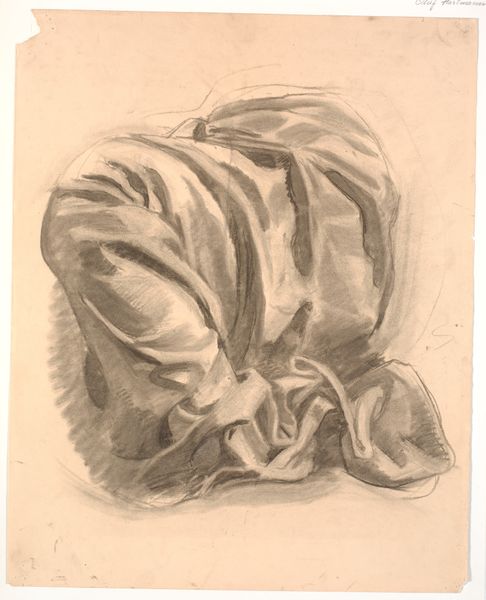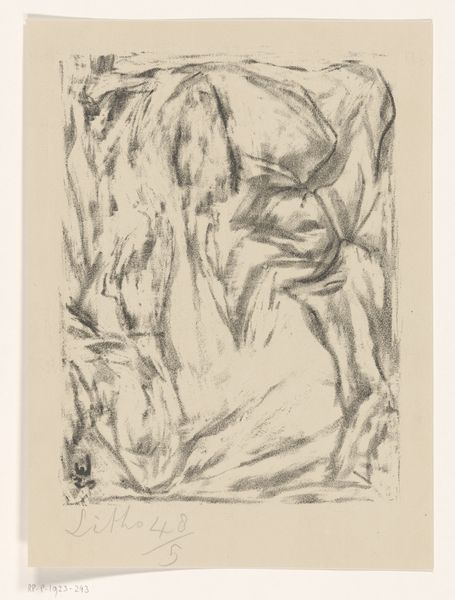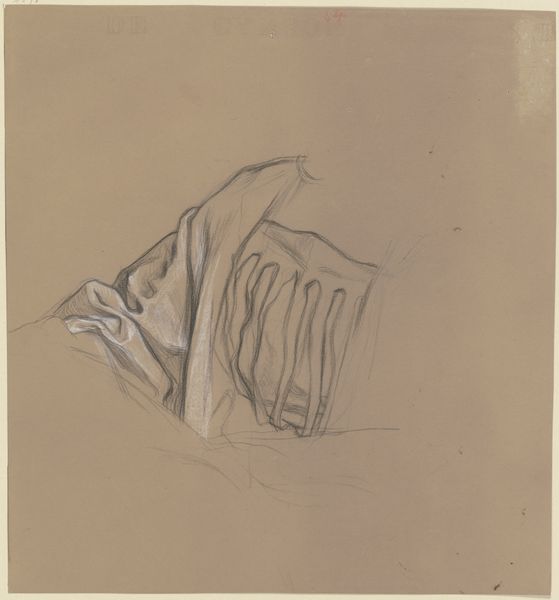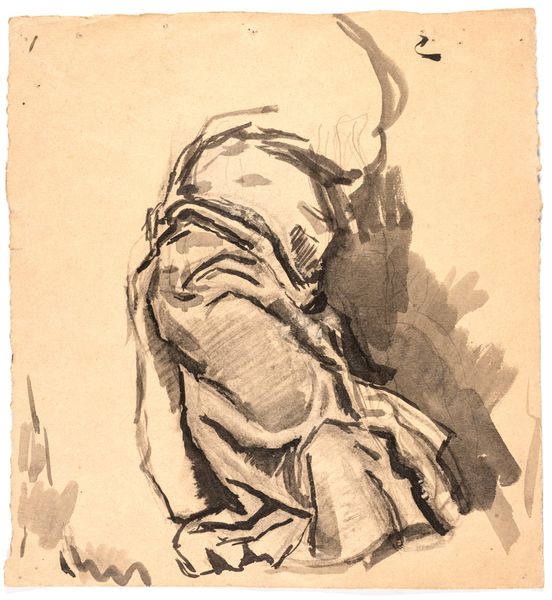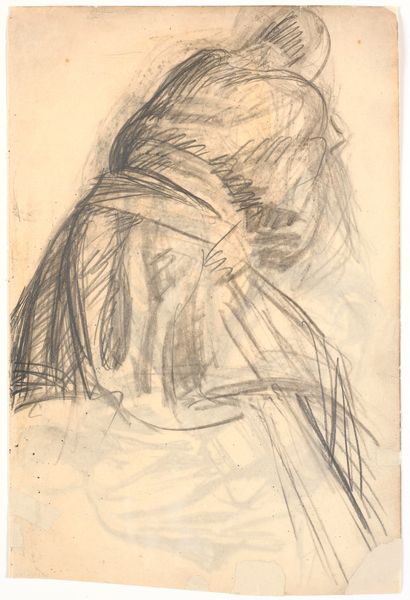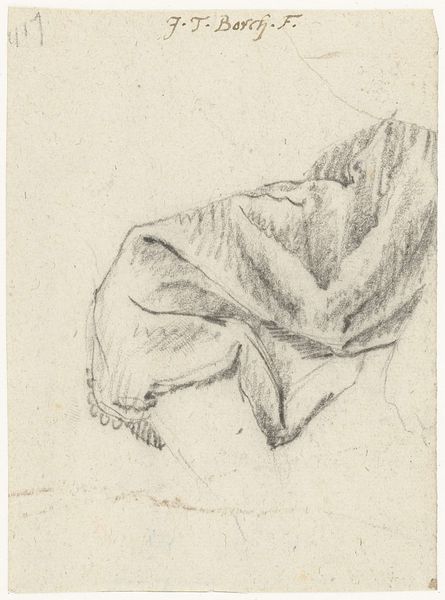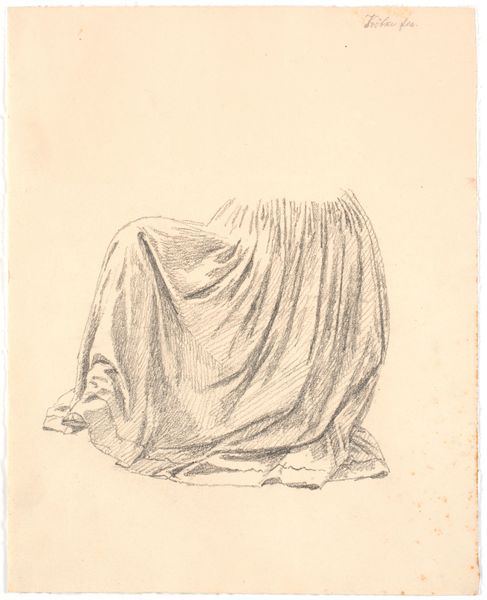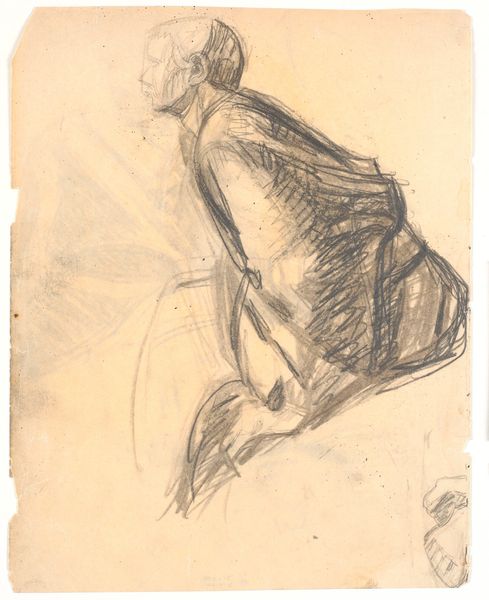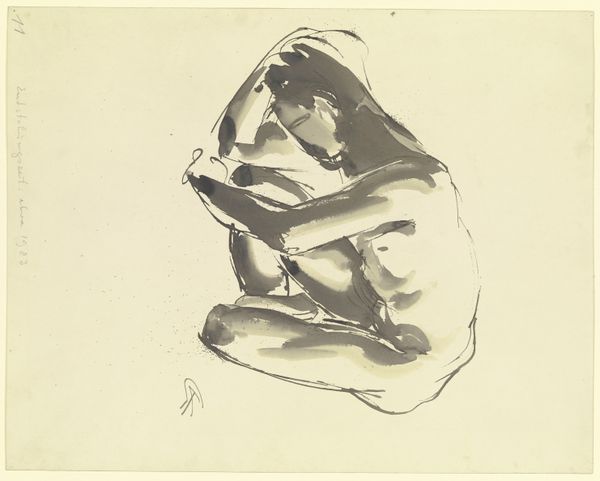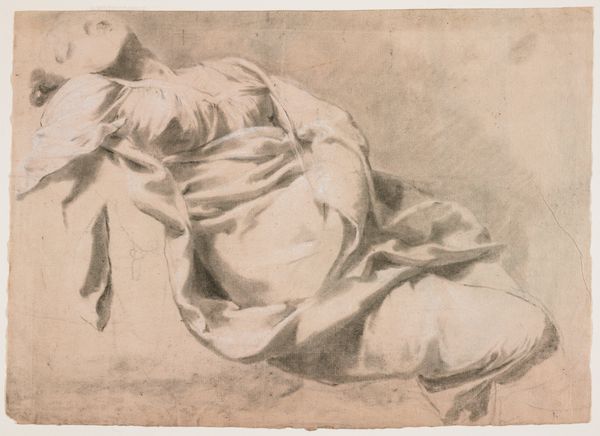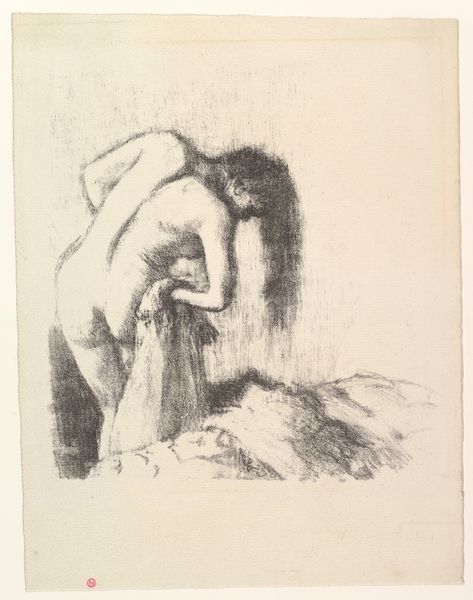
drawing, charcoal
#
drawing
#
charcoal drawing
#
form
#
charcoal
#
academic-art
Dimensions: 602 mm (height) x 480 mm (width) (bladmaal)
Curator: Let’s turn our attention to this charcoal drawing by Oluf Hartmann, entitled "Draperistudie," created sometime between 1901 and 1905. Editor: Mmm, it's incredibly soft, isn't it? Like looking at a dream draped in shadows. I wonder what the texture of the actual fabric was like. Curator: It's interesting that you bring up texture, as Hartmann was meticulously studying the way fabric folds and reflects light. These studies were crucial exercises for academic artists focused on realistically rendering form, and in this case specifically with charcoal on paper. Consider, if you will, that the raw materials—paper and charcoal—were mass-produced, readily accessible to budding artists of the era for practice. Editor: But it’s more than just technical, isn’t it? There's something melancholic about it. It's a draped form, concealing… something? A memory, perhaps? I bet that cloth had a story to tell...if only cloth could talk! Curator: Certainly, while technique is the focus here, these studies offered an acceptable avenue for the artist to suggest narrative through form. By emphasizing volume through dramatic lighting and stark shading, the artist brings dimension to, well, literally a pile of cloth! But it's not simply observation; it’s an exploration of value contrast as a visual language to denote shape. Editor: Shape, yes, but it also evokes feeling. See how the shadows cluster near the top left? It makes the whole thing feel heavy, burdened, like a secret being kept. A simple enough subject, but transformed into something strangely profound. You almost don’t want to ask what's hidden, but you desperately want to know. Curator: Precisely. And in considering that "want", we also must ask where this piece ultimately lives—here, in the collection of the Statens Museum for Kunst, made available for widespread, democratized viewing. A formalist drapery study now provides insight into narrative construction, reception theory, and art historical application, doesn't it? Editor: It certainly does. I began seeing just cloth, but I'm leaving with a glimpse behind a veil, as though that artist drew from shadows a half-remembered emotion, like mist trying to cling to glass, transformed into something solid and shared.
Comments
No comments
Be the first to comment and join the conversation on the ultimate creative platform.
